Digitally Forgotten: Why Digital Inclusion Matters For Your Organization


Editor's Note: Stuart Meadley and Alex Stock contributed to this report. This article series is sponsored by DXC Technology and produced by the TriplePundit editorial team.
Our society and economy are built on connections and relationships. Digital technology provides the possibility of a truly inclusive society, supporting the greatest number of participants, with services and quality of life never before possible.
However, this future may be unreachable for many vulnerable or forgotten members of society. People unable to engage with the modern world have less access to services and a lower quality of life. People unable to engage with the Digital Economy are less able to participate through, for example, buying and selling goods, applying for jobs, and accessing government and health services. Thus, digital inclusivity is critical to the success of our society and economy.
Digital inclusion is about family: both our family by blood—our parents and our children—and our metaphorical family, the disadvantaged and vulnerable in our society. As the Disney movie Lilo & Stitch (2002) teaches us: “Family means no one gets left behind.”
If we are true to our goal of leaving no one behind, we can meet the needs of individuals and communities through a caring society and a thriving economy.
On the flip side, not considering your audience and their digital capability may cause your organization to miss potential markets and increase the cost of servicing your clients or citizens.
Who are the digitally forgotten?
The digitally forgotten are those who are excluded from our modern society because they lack the necessary digital skills or literacy. They include the elderly, who may prefer to talk to a human rather than visit a website. They include the disabled, who may have difficulty reading a screen or using a mobile device. They include the neurodiverse, who may have difficulty using a social network. They include those living in remote areas, who can’t access the technology and bandwidth that many of us take for granted. And one day, as your body ages and technology becomes omnipresent, the digitally forgotten may include you.
We are all vulnerable to being left behind by the progress of technology—unable to access the increasingly digital services and information we need to function.
The digitally forgotten are already poorly catered for, and are often left out of policy and design decisions. However, this group has the most potential to benefit from technology. The digitally forgotten should therefore be the core consideration for, and the litmus test of, a truly digitally inclusive society.
For example, examining the challenges faced by the elderly is enlightening, because:
- We will all be old one day and will face similar challenges;
- Many of their challenges are also faced by other disadvantaged members of society, such as those with a disability;
- Many of us will be, or already are, caring for elderly members of our family or community; and
- The elderly represent both a significant proportion of the digitally forgotten and of the population as a whole.
According to United Nations reports, the elderly cohort (those aged 60 years or over) is growing faster than all other age groups. In 2017, the elderly made up 14 percent of the world population (962 million), while in 2050, they are expected to make up 24.1 percent of the population (2.1 billion). We need to consider who our current and future digital audiences are and what digital accommodations they need.
Further, 6 percent of the population was blind or visually impaired in 2015, according to a study published in the journal The Lancet. The World Health Organization reports that in 2019, 5 percent of the population is hearing impaired. These numbers will only grow as we live longer.
Other digitally forgotten groups include:
- People without a digital education for reasons of inadequate schooling or forced displacement
- People without access to technology, such as those living in rural and remote areas
- People with physical, intellectual or sensory disabilities.
Digital services that can be overlooked
Organizational services: Businesses and organizations are constantly adopting the latest technologies to compete in an aggressive marketplace, to provide better services at more affordable prices, and to protect themselves from increasingly sophisticated cybercrime. Governments need to provide better, cost-effective, convenient and expanded services to their constituents for lodging tax returns, paying parking fines and accessing information.
Vulnerable and less technologically-savvy individuals and populations can be very easily overlooked through speed-to-delivery digital products and services. Simple accessibility accommodations that might be overlooked include:
- Enabling text-to-voice on websites and documents
- Scalable fonts
- Providing documents in multiple formats
- Using clear language
- Simple, understandable security processes
Do you incorporate accessibility from the design phase, or just as an after-thought during testing? If it's the latter, you may want to reconsider how your organization deploys technology to avoid leaving people behind.
Cybersecurity: A large volume of day-to-day transactions take place online, including paying bills, booking flights and banking. Through the drive to create more flexible products and reduce costs, many organizations—including government agencies and financial institutions—expect their clients to divulge personal details to verify their identities. Unfortunately, this makes them more vulnerable to scammers and cyber criminals.
Elder fraud, as it is known, has a huge impact on society, including the health and wellbeing of the elderly and implications for their families and communities. A 2015 True Link Financial study found that the elderly lose over US$12 billion each year to criminal fraud, much of which is digitally enabled. This figure is based on reported incidents, and some claim the actual loss could be three times as high.
The True Link Financial report estimated that 954,000 seniors are forced to skip meals as a result of financial abuse, while a 2018 systematic review and meta-analysis study found that 1 in 18 cognitively intact, community-dwelling older adults (in the U.S.) is subject to fraud each year. But it's not only the elderly who are vulnerable: The same research indicates that young people are equally likely to get scammed, and Cifas reports the number of identity fraud victims who are under 21 reached a new peak, increasing by 24 percent in 2018.
Technology has enabled these problems, and it could help to solve them. Organizations need to consider how they provide education and security to those who are vulnerable and at risk of being forgotten.
Employment: Employment is a big part of participating in society, and the share of job vacancies advertised online is steadily increasing. In Australia, online job vacancies have risen from 45 percent in 2012-13 to 60 percent in 2016-17. Digital inclusion in recruitment processes is critical to accessing the best available talent. If we exclude digitally forgotten segments of society, the consequences include unemployment and associated social issues, such as crime and domestic violence.
The gig economy can provide the digitally forgotten with the opportunity to work by offering greater flexibly in time and place of work. This could be particularly beneficial for stay-at-home parents, people with disabilities and the elderly. It also provides opportunities for unskilled workers and people without formal qualifications. In the U.S., the gig economy contributes 1.07 billion work hours per year.
Again, the elderly are not the only disadvantaged group in this field of digital employment. Companies and recruitment houses often use pre-interview video applications to review and short-list applicants. This disadvantages some indigenous applicants, for example, who may not want to appear on camera for cultural reasons. The neurodiverse may be disadvantaged if they don’t perform well on camera. In short: Video applications can encourage self-deselection by possible candidates, who may otherwise have a lot to contribute to your organization.
On the other hand, electronic applications may help some disadvantaged groups. Candidates with mobility limitations can apply from their homes. Those with social or cognitive challenges may perform better in an electronic application than a face-to-face interview. Ask yourself: Is your business inadvertently de-selecting valuable applicants by requiring face-to-face, question-answer based interviews? Digitally inclusive recruitment options could significantly advance your capability and innovation.
Our company, DXC Technology, works with people on the autism spectrum, so we are aware of the needs of people on the spectrum and the flexibility and accommodations that they require in the workplace. We cater for people with light or sound sensitivities; who struggle in social settings; who require consistent and logical business processes; who struggle with executive functioning; and who are not familiar with common idioms. How are organizations considering technology to support these people in their development? In designing your physical (and virtual) team spaces, are you able to accommodate these sensitivities?
There is indisputable evidence that we don’t all learn the same way. Amongst the autism community, and the community at large, there are people who best learn kinaesthetically, visually, aurally or by reading. Yet many organizations offer only online training, via videos or reading materials. Those clients and employees who have difficulty learning online will struggle to understand and develop in this environment. Ask yourself: Does your organization consider different learning styles when you create training content? Do you provide multiple channels and formats? Online universities are embracing the digital, offering a range of courses, but here too, we need to consider digital inclusion for accessibility and diverse learning styles.
Inclusion by location: There are many places where cutting-edge technology would be beneficial, but where it is too difficult to provide and maintain. In countries where most of the population lives in cities, rural infrastructure development struggles to reach critical mass. This impacts both indigenous and non-indigenous populations. Just getting reliable Internet services is a challenge in many regional areas, let alone remote communities.
Rural communities' lack of infrastructure and technical literacy are significant barriers to accessing basic services such as weather forecasts, news, communication and health services. This excludes people from our digital journey.
Technology allows people with differing abilities to remain in their homes, rather than moving to care facilities. To ensure that rural communities don’t become part of the digitally forgotten, governments need to provide these communities with the infrastructure necessary to participate in the digital world.
Who is responsible for digital inclusion?
We are all responsible for planning a digitally inclusive future. Government and private-sector providers have a particular responsibility, as their decisions impact clients’ quality of life. If a person can’t use an organization’s digital platform, he or she will use higher-cost channels, such as phone calls and physical shopfronts. Thus, service providers have an interest in providing digital engagement options that are inclusive and flexible. In some cases, the old-school way might remain necessary for some time to come, albeit for an ever-decreasing number of clients.
From a social perspective, governments and industry need to invest and collaborate better to do more to address mental health matters associated with digital-related addictions including gambling, sex and pornography, gaming and social media.
Collectively, we must support our digitally forgotten citizens and provide adequate opportunities for them to adjust to a digital future. We can also support carers of the digitally forgotten. Some examples of this could be more flexible and secure means for carers to do things like order groceries, liaise with phone or utility companies, or deal with financial institutions on behalf of others.
At the crux of this is understanding the needs of the digitally forgotten and including them from the outset when designing services and systems. Digital inclusion isn’t just about some naïve vision of a future utopia. Though altruism may be involved, it is also about self-interest: addressing our own needs, and those of our loved ones.
Now is the time to cultivate digital inclusivity and to foster continual learning, awareness of our interdependence and positive engagement between all participants. We can improve physical and mental health at individual, community and societal levels. To achieve this, we need to develop a social, ecological and technological environment for our children to inherit—and a world where everyone can thrive. Now is the only time we can plan for this future. So, what is your digital inclusion plan?
Stuart Meadley is a Team Lead and the Technical Platform Manager for the DXC Dandelion Program, and Facilitator of the DXC Social Impact Practice Indigenous Program Workgroup, with a background in information management, and interests in community engagement.
Alex Stock is an experienced IT professional, and graduate of the Dandelion Program. He works as a Test Analyst at DXC, and is a member of the DXC Social Impact Practice Indigenous Program Workgroup. Alex has an interest in advocating for vulnerable members of society.
CVS Emphasizes Consumer Health with HealthHUBs Expansion
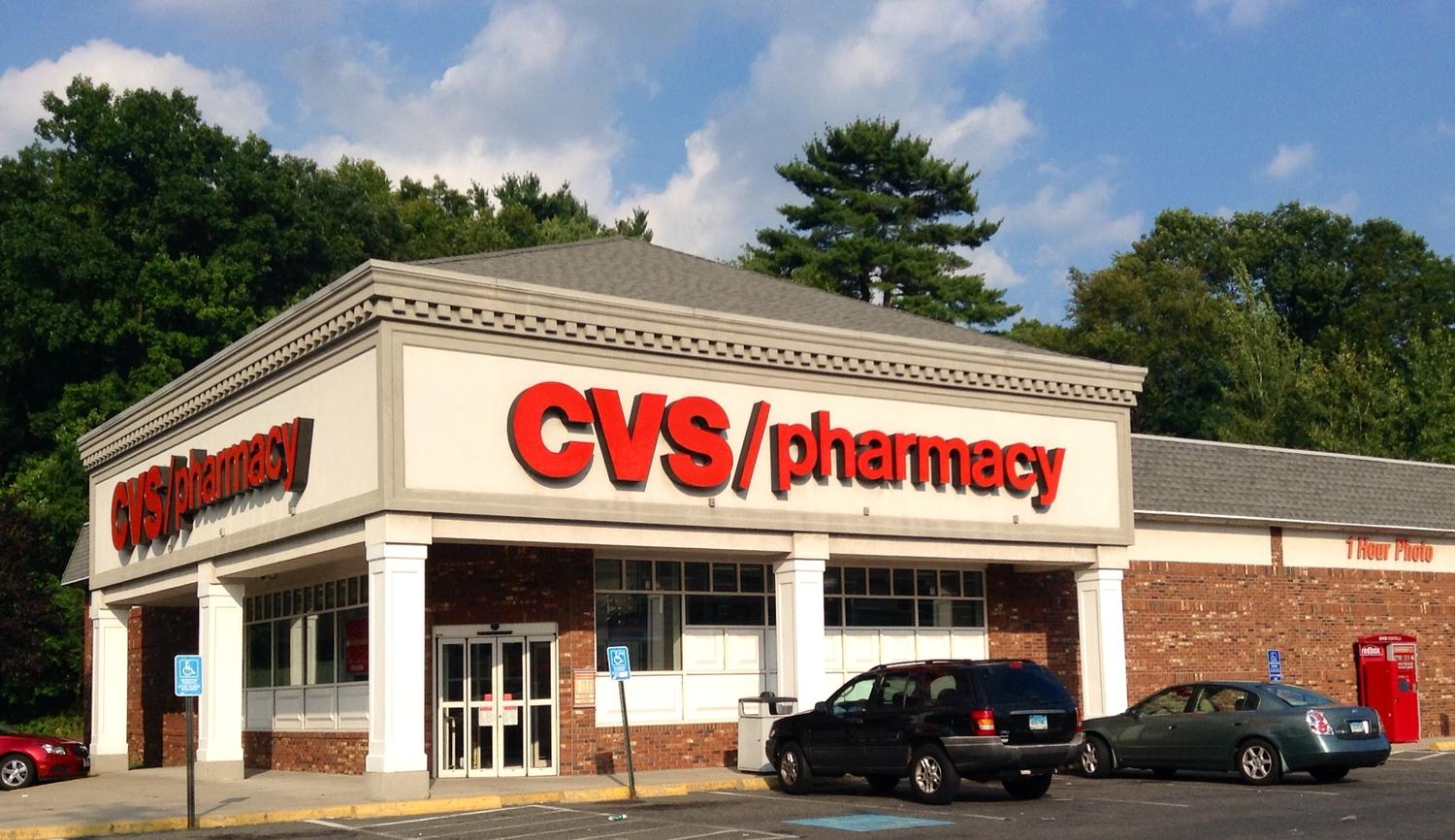
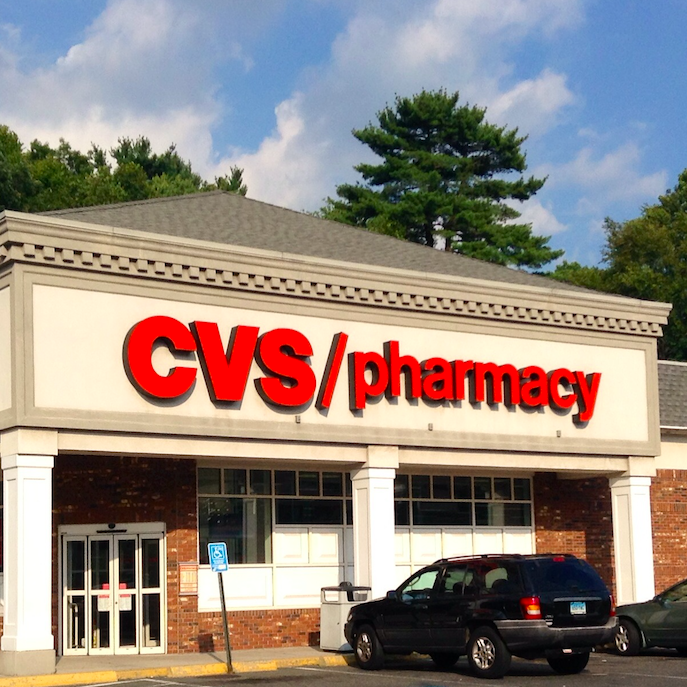
CVS is making good on its pledge to put consumer health first by announcing this week that it will turn 1,500 of its nearly 10,000 stores into HealthHUB locations, with 20 percent less retail space and more on-site health services.
It’s all part of the company's new social purpose business strategy following its $69 billion acquisition of Aetna last year.
"Our new strategy ensures we put our capabilities and resources to work in tangible ways that make a difference in our local communities and in people's lives," said Larry J. Merlo, President and Chief Executive Officer for CVS Health, in the company’s 12th annual corporate responsibility report, featuring its new platform, Better Health, Better Community, Better World.
While it may be more difficult to pick up a birthday card for mom at the expanded network of HealthHub locations, CVS consumers will be able to get screened for diabetes, assessed for sleep apnea, have blood drawn, and even take a yoga class or a class on nutrition from a licensed dietician. Pharmacists in the HealthHUBs will make regular calls and in-person consultations to help patients stay on track with their prescription drug plans. And, the concept stores will employ what CVS is calling a "care concierge," a special greeter who will provide advice to customers on how to get the most out of their visit.
Why CVS is helping to expand affordable healthcare options
CVS HealthHUBs are poised to help millions of Americans who are searching for more convenient and affordable health care services in the wake of the ongoing efforts in Washington to scale-back the Affordable Care Act, or Obamacare. These stores will provide a one-stop shop experience: get diagnosed, pick up your prescription. Learn about better nutrition, pick up a protein bar on the way out.
And while the HealthHUBs help CVS fulfill its social mission of “helping people on their path to better health,” they also help address the growing pressure to retail sales from online rivals and from investors to make the Aetna acquisition pay off.
According to a recent report in USA Today, in the first nine months of 2018, pharmacy prescription sales at CVS were more than three times retail product sales. And retail sales were up only 1.5 percent during that period.
From an insurer perspective, what’s good for CVS customers is also good for Aetna members. The healthier members are, the more likely they are to avoid a trip to the ER, hospitalization or costly procedures. For Aetna, that means higher revenues and profits.
A merger for social good
The model also leverages the synergies of Aetna and CVS. As Bloomberg explained following Tuesday’s announcement, “Because it’s an insurer, it knows when someone is overdue for a diabetes checkup and it can remind them when they arrive at the pharmacy counter. CVS can schedule and provide that appointment, and also can arrange follow-up interventions like a consultation with a dietician, helping patients better adhere to their care plans so they stay healthier and avert the need for costly measures in the future.”
Only time will tell if CVS will be able to deliver on both its purpose and profits but moving to a focus on increased access to quality care, better health outcomes and lower overall health care costs seems like a solid step in the right direction.
For Eileen Howard Boone, Senior Vice President, Corporate Social Responsibility and Philanthropy, at CVS, it’s a no-brainer. "We believe our greatest opportunities ahead will be a result of our ability to meaningfully impact the health of local communities, bringing together the power of our business and strategic community investment."
One question is if CVS will take its model outside the U.S., where access to quality, affordable care is even more of an unmet need. No word yet on if the company plans to introduce HealthHUBs in Brazil, the only country outside the U.S. where it is present. Just imagine the potential for CVS to deliver purpose and profit in other markets such as Mexico, Nigeria and Thailand. We’ll have to wait and see; for now, the company is betting that the U.S. consumer will show that its approach works.
Image credit: Mike Mozart/Flickr
A World Environment Day Reminder about Impact Ventures


The world has changed. The path to profitability has shifted and businesses that strategically integrate social value, environmental stewardship and shareholder value are being rewarded.
As today is World Environment Day, I’d like to remind you of the value of impact ventures which successfully align social impact, environmental stewardship and shareholder value – along with operational efficiency.
Today, businesses of all types face increasing pressure to produce social value and be effective stewards of the environment at the same time as they are producing shareholder value. This pressure has been increasing steadily for years and will continue to grow.
Impact ventures don’t treat social impact and environmental stewardship as an afterthought, nor do they treat it as a higher goal than profitability and business value. They recognize that social, environment and shareholder interests are intertwined. And, they address these challenges strategically and as part of an interconnected whole.
These organizations also invest in the alignment and optimization of value creation along social, environmental and economic dimensions, minimizing zero-sum trade-offs and focusing on value creation efficiency.
Impact ventures consistently focus on value propositions that align the interests of society, community, environment, ecosystems and other key stakeholders, with those of shareholders and the business itself. They recognize that this principle must be strategically integrated into investment and operating decisions and stretch across the depth and breadth of the firm.
The days when social responsibility and sustainability could be relegated to a small unit and shunted to the side while the “real business” was carried out are ending. Impact ventures recognize this and are gaining an increasing advantage over their competitors who follow outdated models that separate social responsibility and sustainability from the core of their firm’s value creation strategy.
Impact ventures are emerging and thriving across all sectors. Here are just a few examples.
Torex Gold, a Canadian gold mining firm operating in some of most security challenged areas of Mexico, has invested heavily in creating sustainable livelihoods for local communities by working with government and local communities to support development of the local fisheries industry. This strengthens the regional economy, provides opportunities to make a better livelihood to more families, helps address a myriad of security issues and provides fresh fish for both local markets and those in Mexico City.
Baraka Shea Butter has developed a branding strategy that emphasizes its authentic connection and meaningful impact on the communities where its products are made. It strategically links its brand story to facilitate incremental value along the entire supply chain, from the remote African communities that produce its oils and butters through to the businesses and crafters that make products with it and on to the consumers who use those products. The value of social impact and sustainability is pulled along the supply chain, creating a strong brand and competitive advantage in a commodity space.
Plenty Inc is a Silicon Valley based new-age agricultural enterprise. It is growing rapidly by delivering healthy and tasty produce to businesses and consumers while reducing water usage as well as transport and related carbon and environmental costs.
Guinness Ghana Breweries has applied impact venture strategy to simultaneously increase its local procurement (and thus impact on Ghanaian agriculture and rural communities), reduce its foreign exchange risk and create a new product with a built-in marketing campaign. Ruut Beer is Ghana’s first beer made with starch from locally grown cassava.
These are but a few leading impact ventures that align social, environmental and shareholder impact, optimizing value across all three dimensions and creating competitive advantage for themselves in the process.
Image credits: Baraka Shea Butter/Facebook
Ricoh Ramps Up SDGs Commitment on World Environment Day
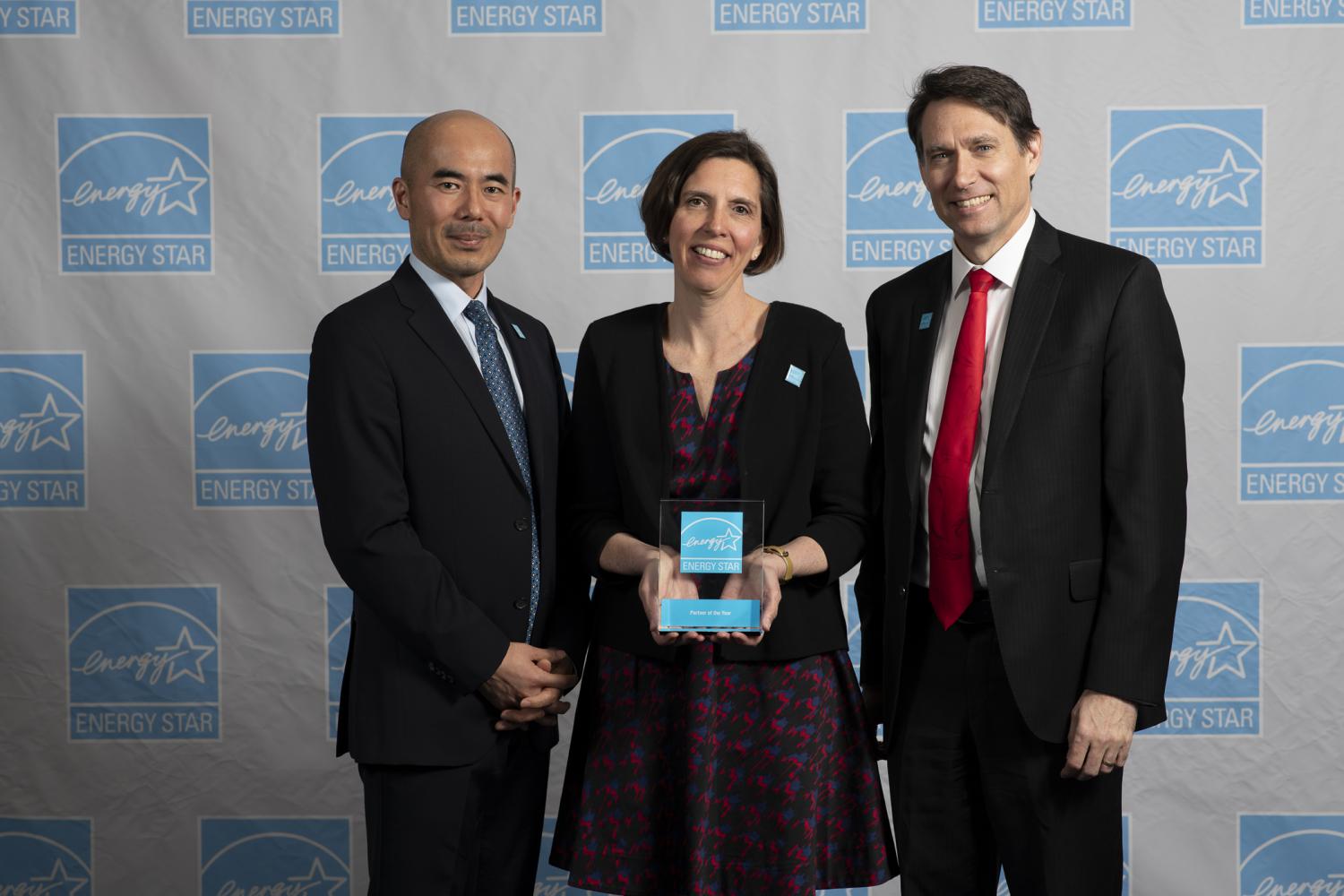
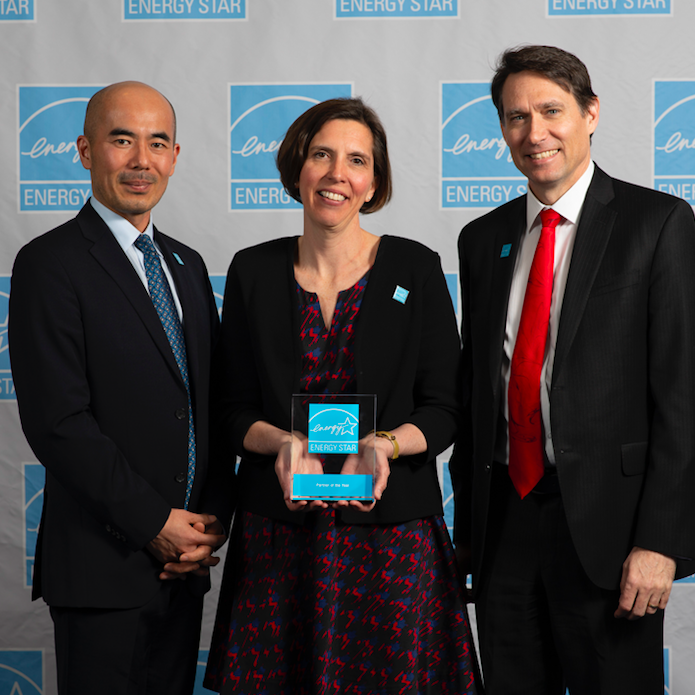
The Ricoh Group announced plans to expand its annual month-long push for environmental sustainability and social awareness and action. Ricoh Global Eco Action has been renamed Ricoh Global SDGs Action, a nod to the United Nations’ Sustainable Development Goals (SDGs) that help guide Ricoh’s approach to helping build a sustainable society.
With Ricoh Global SDGs Action, the company aims to accelerate its contributions toward achieving the SDGs through actions as promoting a zero-carbon society by contributing to counter measures for global warming. Ricoh also addresses a broader range of social issues. The company aims to leverage its global reach and decades-long commitment to sustainability to drive change.
The month of action kicks off on today, World Environment Day, with an SDGs Action Month Symposium at Ricoh headquarters in Japan. The symposium invites speakers who have successfully implemented social and environmental initiatives to discuss strategies, tactics and potential hurdles to be overcome.
Ricoh employees exemplify the company’s commitment to the SDGs
Also, on June 5 every year, all members of the Ricoh Group worldwide are encouraged to think about and take sustainability actions, wear green to show their commitment, and share eco-mindfulness with a larger audience. Additionally, Ricoh turns off all their billboards and signage — except for the solar- and wind-powered ones — for the day.
At the Ricoh offices in Asia, Europe, U.S. and Japan, corporate events are held to increase environmental and social sustainability awareness and to encourage action by individual and group employees.
During June, employees can undertake personal challenges based on the United Nations’ SDGs, such as recycling more paper or volunteering to a social cause. Employees can track their progress in a Ricoh-provided pledge manager.
Groups can also pick a sustainability-minded theme, then work together to plan and implement activities around that theme, such as volunteering to clean-up a park or donating supplies to a wildlife rehabilitation center. Employees are also encouraged to share their SDG activities on social media, to set a strong example and to remind others of the importance of taking action on behalf of sustainability.
Social sustainability is also important to Ricoh
As part of its commitment to address broader social issues, Ricoh supports several organizations leveraging employees’ engagement and participation. More than a fundraising program, the United Way annual campaign, which has raised more than $1 million annually over the past seven years, gives employees the opportunity to volunteer and give back to their communities.
Another example is the RICOH Run for Heroes in support of veterans. This initiative is a "virtual" and physical run that creates awareness and raises funds for military veterans. Each year Ricoh selects organizations that provide direct support to service members and their families. This year, the event will benefit the Fisher House Foundation, a network of comfort homes where military and veterans’ families can stay at no cost while a loved one is receiving treatment
Logging progress for SDG actions will help teams fine-tune their approach in future years, and particularly successful groups and individuals can win awards.
Getting involved at every level
For more than a decade, Ricoh has set aside June to put a stronger emphasis on its year-round commitment to environmental and social sustainability. This effort’s expansion to become Ricoh Global SDGs Action represents a closer alignment to U.N. goals. It also represents an initiative to get everyone in Ricoh’s global workforce, from the top down and the bottom up, involved in sustainability activities.
This new approach drives home the message that humanity only has the one planet to share, and everyone is in this – the fight for the environment and social issues – together. Furthermore, it takes concrete action to make change and encourages others to do so, too.
SDGs in Action: Companies Step Up to Minimize Single-Use Plastic


Image: From ditching plastic bottles, straws and sauce sachets to piloting reusable options, sports and entertainment companies are out to kick the plastic habit—and get fans thinking about their own choices.
If you follow the sustainability media, you’ve likely heard a lot more about plastic straws over the past two years. In response to a wave of consumer pressure, a sizable list of companies—including Starbucks and Alaska Airlines—pledged to ditch plastic drinking straws in favor of recyclable or compostable alternatives. At the corner restaurant or coffee shop, you’re now more likely to be served a drink without a straw than with one.
Considering the mounting backlash against this small single-use item, it’s difficult to believe that when the nonprofit Lonely Whale started its campaign against the straw in 2017, hardly anyone was talking about it.
“At the time, there was no conversation on social media about the straw,” Dune Ives, executive director of Lonely Whale, told TriplePundit. The nonprofit, which was organized as a platform for “radical collaboration” to stop ocean plastic pollution, soon changed all that: Its team headed to South by Southwest, “sucker punched” straw-drinkers with a fake octopus tentacle, and turned the footage into a one-minute video that soon went viral. It followed with an ad campaign that reached 40 countries in less than three months.
As clever and funny as the sizzle reel is, it begs the question: What’s the big deal about plastic straws, anyway? Sure, we use 500 million of them every day in the U.S. alone, according to Lonely Whale. But straws are a drop in the proverbial bucket when it comes to global plastic waste, which totals around 300 million tons annually, or roughly the weight of the entire human population.
Still, the straw served as a catalyst, Ives said. “Our straw campaign was really intended to spark a conversation,” she told us. “It's hard for me to say it was never really about the straw. Of course we wanted to get rid of single-use plastic straws where they aren't needed, because none of them are recyclable. But we really wanted to see where people would take the conversation. To our great surprise, it went pretty far.”
Several companies that have taken up the gauntlet of single-use plastic prevention have communicated a similar sentiment. Sports and entertainment company AEG, for example, put it this way in its most recent sustainability report: “The focus on plastic straws has spurred action not only on the issue of straws, but also on the larger issue of single-use plastics.”
Those are strong words from a company like AEG—considering that millions of people gather at its venues, sports stadiums and entertainment events every year, in settings where moving away from single-use items is particularly challenging. Still, AEG—and other leaders within the sports and entertainment sector—are listening to consumers and seeking alternatives. These efforts not only help entertainment companies meet consumer demand, but also support global agendas like the U.N. Sustainable Development Goals, including SDG 12 (responsible consumption and production).
As we celebrate World Environment Day, we’re taking a closer look at how this sector—and companies and consumers more broadly—are tackling single-use plastic.
Starting with the straw
Last year’s World Environment Day focused on plastic pollution. In the year since, conversations about using less plastic have become exponentially more mainstream, thanks in part to the pushback against specific single-use items like the plastic straw.
For example, the famed Coachella Music and Arts Festival—which is organized by AEG—eliminated plastic straws last year and became the first festival in the world to align with Lonely Whale’s For A Strawless Ocean campaign. Stagecoach: California’s Country Music Festival soon followed suit.
A number of the company’s other venues and events also updated their straw policies—changing to paper straws, making straws available only upon request or removing straws entirely. But, as Ives and her team predicted, it didn’t stop there.
“Knowing that you've had success at an individual level or within a department or at a venue, you wonder where to then build on that success,” said Ives, who is also a co-founder of the Green Sports Alliance. “Until finally people wonder, ‘I don't even know why we had single-use plastic to begin with. Who thought that was a good idea? It’s like the 8-track tape.’”
For example, AEG’s Sydney Convention and Exhibition Centre swapped bottled water for tap water at events, following a blind taste test in which nobody could taste the difference. In Greenwood Village, Colorado, the Fiddler’s Green Amphitheatre ditched plastic cups for a reusable cup program. In London, The O2 entertainment center eliminated plastic straws, cutlery and sauce sachets from the vendors on its concourse and piloted a reusable cup program—saving at least 1.6 tons of plastic over the past year.
Kicking the plastic habit
For large events, the savings can be significant—Coachella organizers, for example, say their move saved 300,000 straws in two weekends. But efforts like these are not only about eliminating single-use plastic at one venue or for one day. Every time people are presented with another option, they become more aware of our power to tackle plastic waste. And when sustainable options are championed by a favorite sports team, festival or venue, it becomes all the more powerful.
“We're all starting to be willing to have a conversation around our behavior and our everyday choices,” Ives said. “Are we okay with a million species going extinct under our watch? Are we okay with 8 million to 12 million metric tons of new plastic entering the ocean every single year? Are we okay with emissions continuing to rise? Those are our choices.”
Despite the runaway success of Lonely Whale’s plastic straw campaign, some question this type of incrementalism, arguing that small steps don’t match the scale of the problem.
“There is definitely some danger in people taking a small step and essentially checking the box and saying, ‘Okay, I did my part,’” Ives told us. “That's not what we're seeing, though. What we are seeing is that people are constantly asking: What's next? Plastic is so visible—you see trash everywhere—and once you start paying attention to it, you can't ignore it.”
What’s next?
For its part, Lonely Whale is moving to the next phase of the plastic-free conversation with its new Question How You Hydrate campaign. Launched this week, the campaign features a promo video and a social media challenge, #HydrateLike, which encourages individuals and brands to ditch plastic water bottles in favor of sustainable alternatives. It also includes a pop-up Museum of Plastic in New York City, which leverages an "Instagram-able" setting to inspire people to think twice about plastic waste.
As AEG put it in its report, presenting sustainable choices in this way can “help chip away at the 'throw away' culture our modern society has created.” And seeing an industry like sports and entertainment take up this cause is inarguably a huge step forward, considering the sector's clout with fans and its ability to offer plastic alternatives to millions around the world—which, as Lonely Whale's story demonstrates, is bound to get the conversation going.
This article series is sponsored by AEG and produced by the TriplePundit editorial team.
Image credits: Flickr/COD Newsroom and Lonely Whale
Just in Time for World Environment Day: Freedom Gas


“Beat Air Pollution” is the theme of United Nations World Environment Day this year. That covers a lot of ground, from wood-fueled household cookstoves to massive coal power plants. In his Environment Day message, UN Secretary-General, António Guterres prevailed upon governments to “tax pollution; end fossil fuel subsidies; and stop building new coal plants” in recognition of World Environment Day.
Secretary-General Guterres also highlighted diesel engines and the burning of trash as major sources of air pollution.
So, what is missing from this picture? Freedom gas!
Freedom gas!
“Freedom gas” is the newly minted nom de guerre for fossil fuel-based natural gas, and last week it blew up all over the media. The news cycle has since moved on, but here’s a quick review.
Apparently freedom gas emerged during a speech in Brussels on May 2, in which U.S. Energy Secretary Rick Perry drew attention to Europe’s reliance on natural gas from Russia.
Russia’s dominant role in the European gas market has long, deep roots. However, things spiraled out of control when Perry used the somewhat hyperbolic phrase “delivering a form of freedom” to describe the benefits of increasing U.S. gas exports to Europe.
After the speech, a EURACTIV reporter convinced Perry to endorse the phrase “freedom gas,” and the damage was done.
That was just the beginning. Apparently taking Perry at his word, the Energy Department deployed “freedom gas” and “molecules of U.S. freedom” in a May 28 press release, announcing a new project that will increase liquid natural gas exports from a terminal in Texas.
That caught the eye of the American news media, and news of freedom gas spread swiftly across the internet.
Adding to the hilarity, the name of the LNG terminal is Freeport.
It’s all fun and games ’til the planet gets hurt
All kidding aside, perhaps it’s just as well that fossil natural gas has come under the media spotlight, just in time for World Environment Day.
Evidence is mounting that methane emissions related to natural gas operations are a major contributor to global greenhouse gasses. Nevertheless, natural gas still continues to enjoy a public reputation as a less polluting alternative to coal power, partly thanks to public relations campaigns undertaken by natural gas stakeholders.
Still, emerging evidence of the environmental impacts of natural gas strongly suggests that business leaders seeking “cleaner” energy are better served by engaging with wind, solar and other renewables — in other words, by switching to electricity.
The impacts of natural gas are local in scope as well as global. Natural gas does emit less pollution when burned, but that is cold comfort for communities across the U.S. that suffer local impacts from drilling, transportation, storage, and distribution operations.
The short list currently includes evidence of water contamination, water shortage risks, and local air pollution issues related to methane leakage and truck traffic, as well as low birth weight, asthma, and other direct public health impacts.
Natural gas operations can also depress property values for homeowners using well water, and can harm other existing businesses, such as tourism and agriculture.
Freedom from freedom gas
The impact of natural gas on indoor air quality in residential buildings is another area of harm.
In 2014, the National Institutes for Health observed that “Natural gas cooking appliances, which are used by a third of U.S. households, can contribute to poor indoor air quality, especially when used without an exhaust hood.”
Specifically, NIH cited a study modeling nitrogen dioxide (NO), carbon monoxide (CO), and formaldehyde emissions, “each of which can exacerbate various respiratory and other health ailments.” The conclusions were significant for NO and CO:
"Gas burners were estimated to add 25–33 percent to the week-averaged indoor NO2 concentrations during summer and 35–39 percent in winter…For CO, gas stoves were estimated to contribute 30 percent and 21 percent to the indoor air concentration in summer and winter, respectively.”
Indoor impacts have received little scrutiny but a new building electrification campaign undertaken by the environmental organization Rocky Mountain Institute is beginning to change that.
While drawing attention to the health impacts of gas appliances, RMI also makes the case that all-electric buildings save money for homeowners in the long run, both in new construction and in retrofits.
The electrification movement appears to have legs, as the falling cost of wind and solar continue to push both coal and natural gas out of the power generation sector.
Electrification also creates opportunities for savings in the construction industry, by eliminating costs related to new gas lines and permits.
Building electrification and the bottom line
The electrification case for businesses and industry is more complicated than for residential properties, though the bottom-line benefits are beginning to emerge.
Last year the Energy Department’s Lawrence Berkeley National Laboratory looked at the economics of building electrification across all sectors, and toted up a long list of advantages:
“Promising energy system benefits of electrification include greater flexibility for managing electric loads, opportunities to provide additional ancillary services1to the grid, and valuable synergies with electric vehicles, demand response, and distributed generation and energy storage.”
That’s not all:
“In addition, electrification may foster economic development, boost balance of trade, improve air quality, reduce fuel price risks, reduce consumers’ costs in some applications, and improve product quality in some industrial processes and quality of some energy services in buildings.”
Berkeley Lab points out that some applications — space heaters with electric heat pumps, for example — are already economically competitive in many buildings.
On this World Environment Day, natural gas users, both commercial and residential, can make a real difference by taking a good, hard look at the impacts of “freedom gas” on global warming and local air pollution and weighing the bottom-line benefits of electrification.
Image credit: Pixabay
Crunch Time: Eating Bugs to Save the Planet
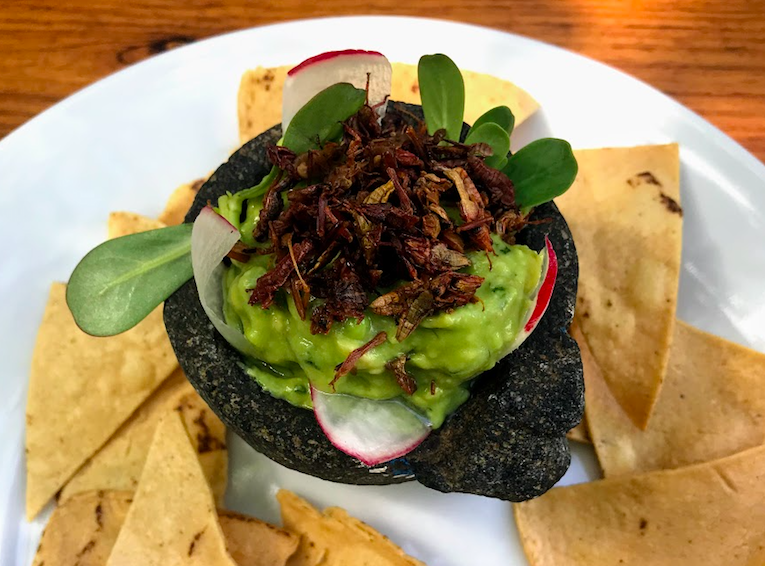

Eating bugs such as grasshoppers for the first time is more of a mental hurdle than anything. My first ‘hopper tasting occurred at a social gathering in Oaxaca, Mexico where a bowl of only grasshoppers was plucked from by partygoers. I was hesitant, but I didn’t want to pass up the opportunity to indulge in a traditional treat. After swallowing a couple whole and overcoming the concept of intact legs on food, I advanced to chewing. Shortly, I realized it’s just like eating a handful of peanuts – earthy tones, equally salty and packed with protein, just a tad crunchier.
And it is not just in Oaxaca where this protein-rich snack can be enjoyed. For example, to commemorate this year’s World Environment Day, staffers at this news site in the Holy Land whipped up this quick and easy crunchy grasshopper snack seasoned with that timeless Middle Eastern seasoning mix, zaatar.
Traditions, trends and best available options for eating bugs
Entomophagy – eating insects – is practiced within 80 percent of the world’s nations. A United Nations Food and Agriculture Organization’s 2013 report estimated around 1,900 insect species are consumed by nearly 2 billion people. In Oaxaca, chapulines (roasted grasshoppers) are a delicacy – ground up and sprinkled or served whole on a variety of dishes.
While the U.S. is a little late to the party, restaurants and even baseball stadiums are starting to explore edible insect options, tempting Americans to overcome their disgust toward creepy crawlies. Due to this culinary boldness, the “ick” factor associated with eating bugs in the U.S. just might be on the verge of disappearing.
The excitement around eating grasshoppers or other edible insects – including crickets, locusts, mealworms and ants – expands beyond introducing a new salty, crunchy snack to your diet. Grasshoppers and crickets are a healthy and sustainable source of iron, calcium, omega-3, B vitamins, fats, fiber and protein. In fact, grasshoppers and crickets are higher in protein than environmentally damaging animal-based proteins such as beef, poultry and fish.
The ecological price of protein
Unlike conventional livestock, edible insects can be produced with a considerably lower environmental impact, requiring less land, feed, and water. While livestock production has been the mainstay of the worlds nutritional demand, it is becoming a less viable and sustainable option as the world population increases.
The global population is expected to reach 9.8 billion by 2050. In 2015, the FAO estimated global meat consumption at 41.3 kg/capita/year. By 2030, estimates predict an increase to 45.3 kg – that’s roughly 100 pounds of meat per person each year. If that figure doesn’t sound significant to regular meat eaters, think of it at a global scale.
Meat production at current rates is already devastating waterways, deteriorating ecosystems and acting as a major contributor to climate change. Increasing meat consumption by any degree, only exacerbates the environmental threats.
Livestock farming poses many dangers to the environment:
- Eutrophication, or nutrient loading in water bodies from growing grain and applying manure.
- Antibiotics promote antibiotic-resistant bacteria – anywhere from 30 to 90 percent of antibiotics given to livestock end up back into the environment.
- Overgrazing reduces ground cover, causing soil erosion and siltation, or increased suspended sediments in waterways.
- Ammonia and greenhouse gas (GHG) emissions from land spreading, manure storage and treatment, and transportation.
As of now, livestock production is responsible for one-third of GHG emissions and uses over 30 percent of all arable land on the planet. Alternative food options are critical to overcome food challenges, meet nutritional demands, and mitigate climate change.
In contrast, insects need less feed because they convert food to protein more efficiently, less land because they can be raised in labs or harvested as a co-product from staple crops like corn (acting as a form of pest management), and they release an estimated 80 times less methane than cows, producing an overall lower environmental footprint than conventional protein sources.
Business of bugs
Still not sold on eating bugs?
That’s ok. Companies like Exo and Bitty Foods are finding business opportunities with more palatable insect options, short of the antennas and legs. Crickets are dehydrated and ground up into flour, which can then be added to granola and pancakes. Food tech companies are also looking to insects as the base for protein-rich food products. Looking to get really creative? Explore the collection of recipes compiled in The Cricket Cookbook written by Robyn Shapiro, the founder of another cricket powder company, Seek.
Innovation and knowledge sharing have always played important roles in sustainability. Raising and harvesting insects as the remedy to food scarcity and climate change is a key example of combining traditional knowledge with creative marketing to build sustainable solutions.
Meat consumption does not have to end entirely, but we must become more open to alternative nutritional source and support sustainable farming practices if we want to protect the planet.
So go ahead, join the party, eat some bugs.
Image credits: Cory Tiger
Symantec: Labels are for Jars, Not for People
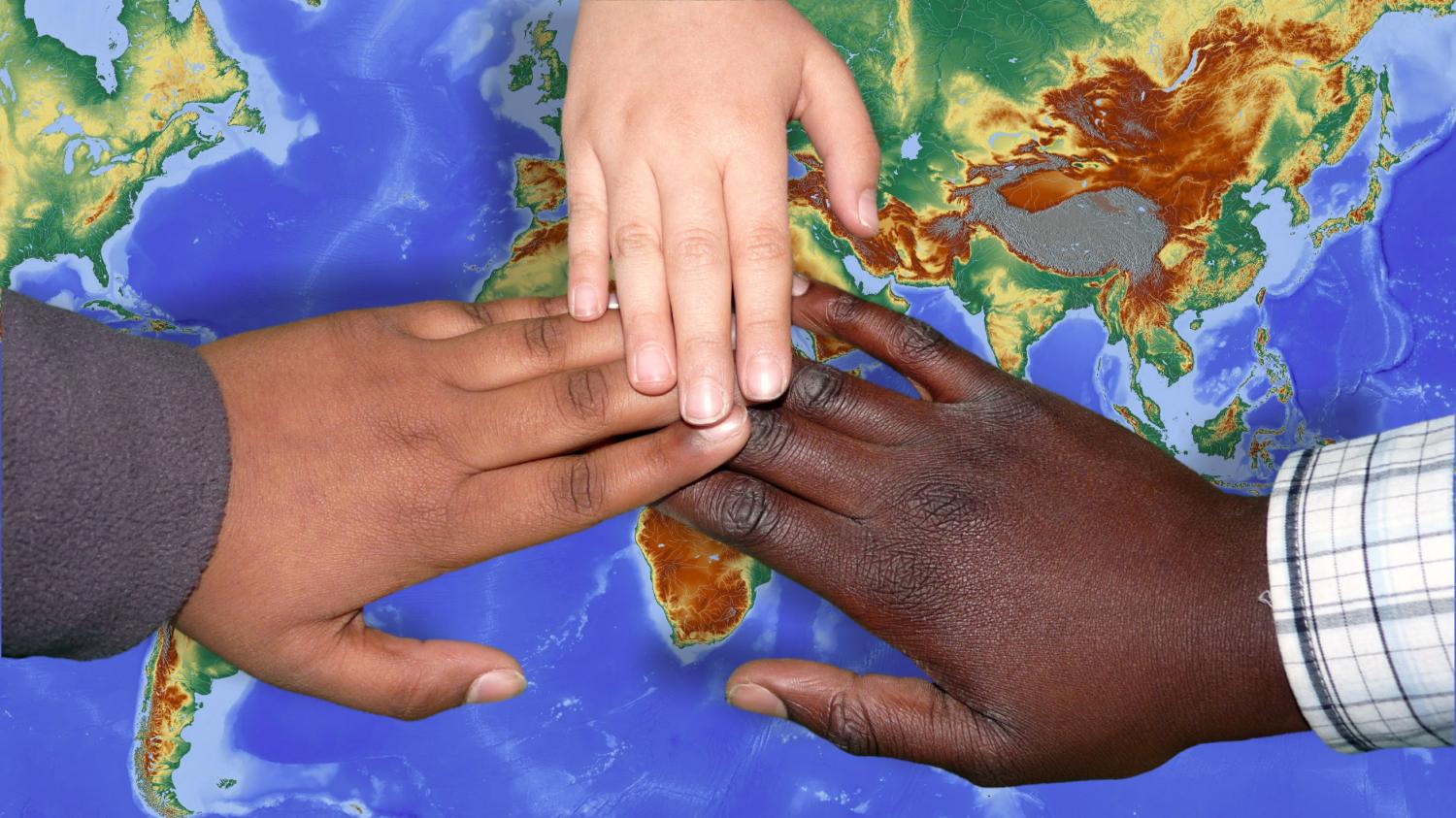
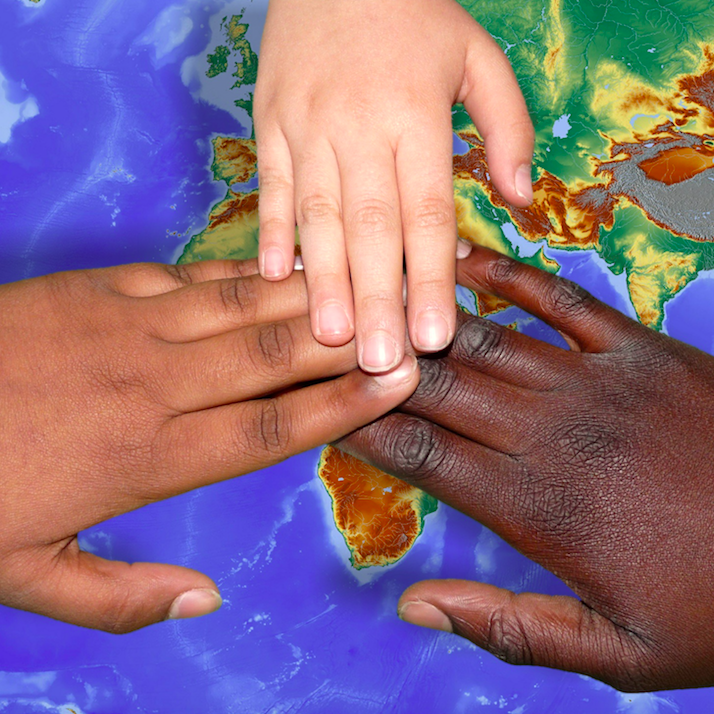
Walking to work one day, seven years ago, I saw a gigantic piece of street art. It was a bottle of Heinz ketchup, but read “Labels are for jars, not for people” and listed a website for a nonprofit called First Fortnight. I looked into First Fortnight and found an Irish Charity that challenges mental health prejudice through arts and cultural action.
They were looking for volunteers and I jumped at the chance to get involved. In Ireland, one in four people are predicted to struggle with their mental health at some point in their lives. I meet many people who are prejudiced against those living with mental health illnesses and find this often stems from simply lacking a story they can relate to or understanding the impact that ill mental health can have on an individual’s everyday life. Mental health illnesses are first and foremost illnesses, and someone suffering from depression or anxiety deserves the same empathy as someone suffering from a “physical” or visible illness.
First Fortnight utilizes arts and culture to challenge the mental health stigma, while supporting some of Ireland’s most vulnerable people through creative psychotherapy services. My main involvement has been helping run events at their annual mental health festival, serving on their volunteer Board of Directors for two years, and helping with organization strategy and event programming.
Volunteering has helped me become more inclusive and has helped raise my self-awareness towards some of my own unconscious bias. As a Sales Engineer and leader at Symantec, a lot of my skills involve active listening. These business skills come in handy when engaging in conversations aimed at challenging the mental health stigma. At the same time, what I’ve learned through volunteering makes me a better manager and colleague. I’ve learned to be as empathetic and open as possible at work because you can never actually know what someone is going through in their life.
I’m proud to work for a company that cares about supporting our local communities. As part of Symantec’s Service Time initiative, the EMEA Inside Sales Organization encourages all teammates to volunteer each quarter and my colleagues have supported First Fortnight on a regular basis for the past four years in various ways.
In addition to encouraging volunteering, Symantec financially supports the organizations employees volunteer with through our Dollars for Doers grants. These grants help First Fortnight run their free, arts-based mental health service for adults experiencing or at risk of homelessness in Dublin and last year’s matching grant allowed the charity to buy new musical instruments.
Volunteering is an important part of my life and a beautiful part of the human experience. I’ve met fantastic people of all backgrounds that I may not have ever met through friends or work. And, I’ve seen firsthand how empowered, strong, and alive a person can be when they have the right support.
Feeling inspired to help? Visit https://www.firstfortnight.ie/volunteer to learn more about First Fortnight or search for ways to give back with a volunteer search engine like Volunteermatch.org.
Previously published on Symantec's corporate responsibility blog and in the 3BL Media newsroom.
Image credit: Pixabay
The UK Now Has More EV Charging Locations Than Gas Stations


According to various reports, the United Kingdom now has more electric vehicle (EV) charging stations than it does gas (or shall we say petrol, or filling) stations, boasting 8,646 EV charging locations compared with 8,400 gas stations and reflecting a growing EV footprint in the U.K. The data revealing this milestone comes from Zap Map, an entity which claims to be the U.K.’s leading charging point platform. This news marks the first time in the country’s history that EV charging stations have outnumbered gas stations.
So long to diesel?
This is quite a remarkable milestone because in many ways Europe was slow to recognize EVs as a more sustainable form of transportation until quite recently. For several decades, Europe’s go-to for efficient transportation were cars with small capacity diesel engines, which attained great mileage per gallon compared with gasoline engines, and consequently accounted for in excess of 50 percent of vehicle sales in Europe.
However, with policy driving change across the pond with aggressive goals for zero emissions vehicles - commensurate with improving EV technology and a growing number of EV choices for consumers on the market - diesel’s dominance is slowly, but consequently, on the way out.
Autocar reported last year that new car sales in the U.K. saw demand for diesels fall by 15.7 percent in one year between March 2017 and the same month 2018 while in the same period, EV demand increased by 5 percent.
In recent years there has been a realization that diesel-powered cars are not as environmentally friendly as they had been made out to be. Despite the unquestionable fuel efficiency of diesel engines, carcinogenic particulates from them have diminished air quality in urban environments throughout Europe. No doubt too, VW’s emissions scandal in the USA brought to the public’s attention the deleterious effects of nitrogen oxide emissions, landing another blow to diesels’ reputation.
EV charging stations could see more customers very soon
Going forward, policy will likely play a significant role in promoting EVs over diesels too. For example, Autocar reported the U.K. government increased the new vehicle tax on diesel vehicles as of April 2018, unless new cars met the latest Euro 6d air quality standards - which none of them did at that time.
On top of this, the future vision for the U.K.’s transportation fleet turns away from the internal combustion engine altogether. In the summer of last year the U.K. government unveiled its Road to Zero strategy. Edie.net detailed how under this initiative a £1.5 billion investment into EV research, development and infrastructure will help phase out gasoline and diesel sales by 2040.
Part of the Road to Zero plan included a recognition that a lack of EV charging infrastructure would be one of the top impediments to widespread adoption of EVs in the country. However, as reported here, Ben Lane, Zap Maps’ founder says, “the public and private sectors are now investing heavily in the U.K.’s EV charging infrastructure to ensure that there are sufficient charging points to support the growing electric fleet.”
Demand for EVs remained robust in the U.K. for the entirety of 2018. According to Airquality news.com, the EV market grew by a record 19 percent in 2018 with 59,911 new plug-in electric cars registered in the U.K. Plug-in hybrids accounted for the bulk of the market, with 74 percent of registrations.
Now the private sector is helping to drive EV adoption in the UK
In addition to public policy, the private sector forms an important part of the equation as well, and is notably attracting nontraditional EV players, who are perhaps seeing the writing on the wall. For example, last year oil giant BP acquired Britain’s Chargemaster, and the energy company now says it manages the country’s biggest public charging network.
Charging infrastructure growth appears to be a growing global trend too. AP reports in the forecast period of 2019-24, the market is expected to grow by 38.45 percent - with China currently leading the EV charging market.
For readers in the United States, the trend in building out EV charging infrastructure is gaining momentum here as well. TriplePundit reported last week the EV charging market is heating up with the news that General Motors and Bechtel are planning a venture to build out a network of fast charging stations. Their strategy is to build out charging stations in urban environments where people drive and park. This, along with range improvements of EVs, will continue to remove impediments to EV ownership.
Image credit: Pod Point/Facebook
Can Kelp Help Feed the Planet and Save the Oceans?


Kelp, an algae seaweed that grows in shallow, nutrient-rich saltwater along coastlines, is showing some potential to become a sizable business. For example, algin, an emulsifying and bonding agent, is extracted from kelp and used in a wide range of products. Kelp also shows promise as becoming more popular as part of the human diet. This segment accounts for the highest market share of the global seaweed market, according to Allied Market Research, and is expected to grow at nearly 12 percent from 2017 to 2024.
Now, a small company called Akua, founded in 2017, is carving out its own niche in this sector. Its first product is Kelp Jerky, which the company describes as a high-protein, high-fiber snack that’s free of refined sugars, soy, gluten and any allergens. The snack comes in three flavors and can be ordered directly from the company’s website.
Akua’s products are based on ocean-farmed kelp, specifically sugar kelp (Saccharina latissima), a brown macroalgae. The company sources its kelp from a network of New England-based ocean farms along the northeast seaboard from Maine to Rhode Island. Spores are typically grown in a nursery on spools, which are then transferred to the kelp farms by boat, where they are then seeded on lines.
The farms are located in “Approved/Open” and “Conditionally Approved” areas, which are classified by water quality and other criteria. These classifications are based on shellfish standards, which are the highest in the aquaculture industry because shellfish are more susceptible to pollutants.
After harvesting, the kelp is then processed in Portland, Maine. All kelp is tested for bacteria by a third party food safety company at the processor and then tested again by a third party food safety lab at AKUA’s manufacturer, who certifies it as food safe. In addition, apple cider vinegar, which regulates the products’ pH levels, is added to every batch of the kelp snack.
Akua’s food safety process is approved by a licensed Connecticut-based food lab, whose general safety protocols are followed for dehydrated vegetable jerky. The kelp is repeatedly tested for heavy metals and the company insists the results are food-safe.
The company considers kelp one of the most sustainable food sources on the planet. Akua says the environmental and economic benefits of kelp include:
- Sequesters carbon and nitrogen five times more effectively than its land-based plant counterparts
- Requires no fresh water, dry land, fertilizer, or feed to grow
- Regenerative: grows up to 1.5 feet a day, ultimately reaching heights of 100 feet or more
Considered by some to be a superfood, kelp, including Akua’s product, is rich in potassium, calcium, Vitamin D and Vitamin C.
The snack also makes to claim to be vegan, non-GMO and keto-friendly. Each bag has 10 grams of plant-based protein and 10 grams of fiber, while being low in calories with a touch of all-natural maple sugar.
Despite all this nutritional value, does this kelp jerky snack really taste good? According to Sir Richard Branson’s testimonial, the answer is a resounding yes: “It’s incredibly delicious. Well done."
The larger question, however, is whether kelp and other species of seaweed can become more popular, scale up and have a role in changing our eating habits and help save the oceans. The evidence suggests kelp cultivation, including what is often occurring in underwater “3-D farms” or some aquaculture installations, can help improve our oceans’ health. Supporters of the nascent kelp sector have suggested that this underwater crop could generate new revenue streams for workers in states such as Maine.
But as a NPR profile from earlier this week points out, it may take a while for kelp to become popular and appear in more restaurants and dinner plates at home. There are challenges with logistics, storage – and consumer preferences. But if kelp can take off, there will be winners all around, including a boost of biodiversity in our oceans.
Image credits: Akua/Facebook